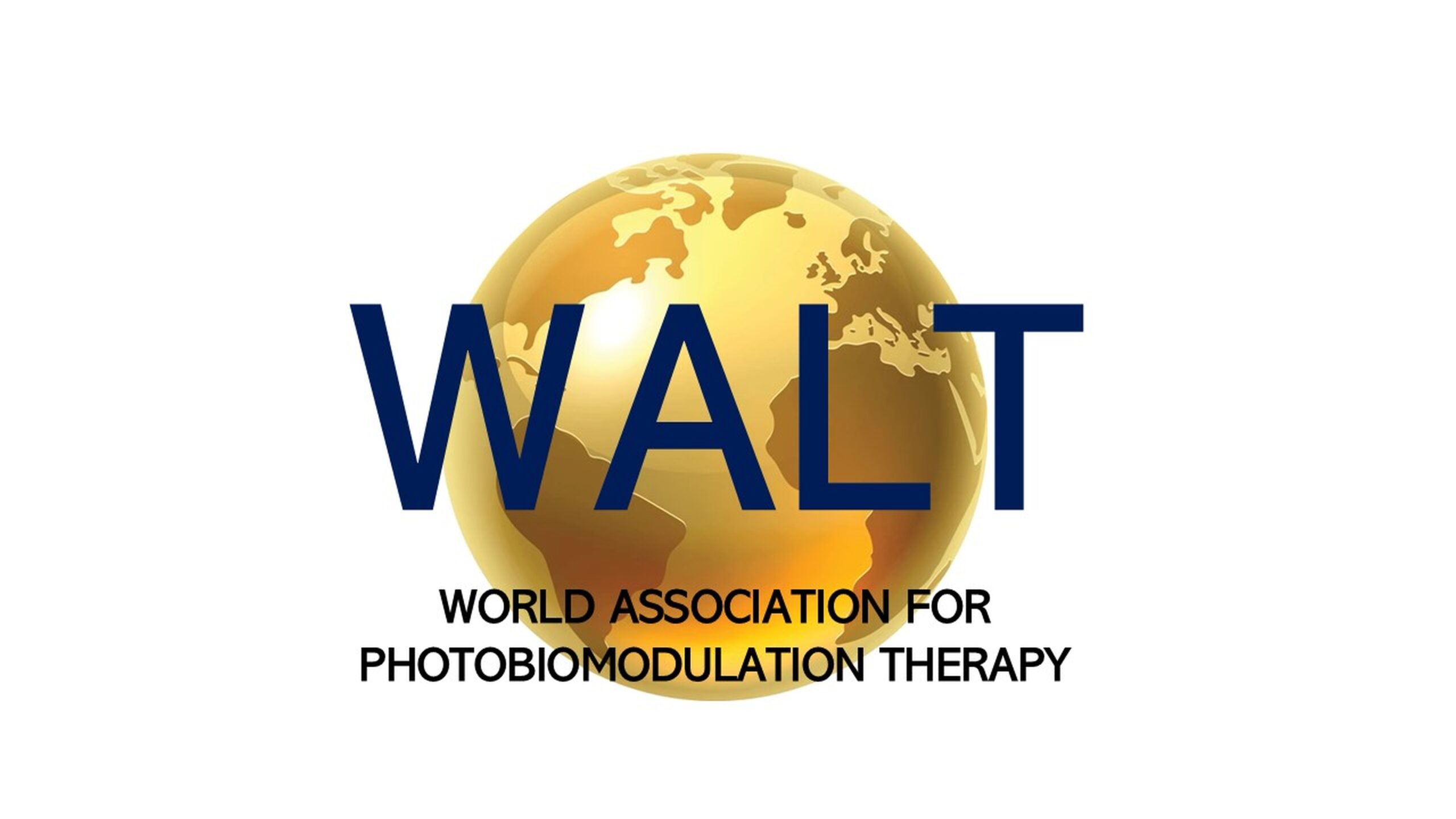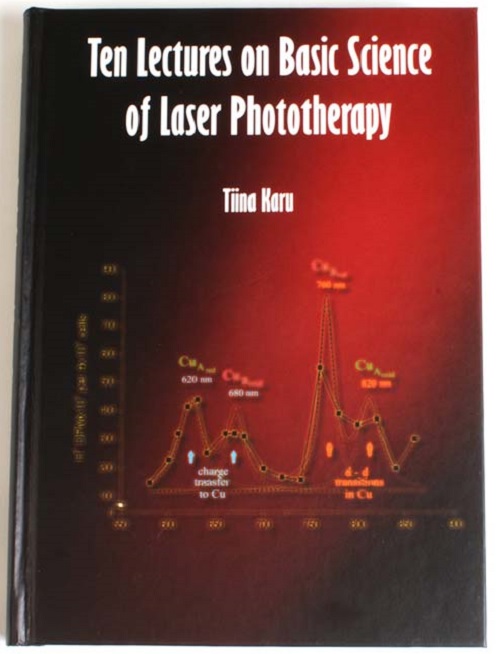Author: Tiina Karu
Laboratory of Laser Biology and Medicine, Institute on Laser and Informatic Technologies of Russian Acad. Sci.,
Troitsk, 142190 Moscow Region, Russian Federation
Published by Prima Books AB, Grangesberg, Sweden, 2007
In 1967, Dr. Endre´ Mester (Hungary) wondered if the new ruby lasers (red light at 694 nm) would cause cancer. He shaved off the hair of mice, and irradiated one group, and not the other. The irrradiated mice did not get cancer, but their hair grew back more quickly than did the hair of the unirradiated mice. He is credited with discovering laser biostimulation.
I met Dr. Mester at a laser conference in Florence, Italy, in 1979. He presented striking evidence of the healing of leg ulcers with low-intensity red laser light. There were no controls, but these patients had failed to respond to traditional medicine, and were cured with the Low Level Light Therapy. It was a striking example of the photostimulation of wound healing.
Since then, Low Level Light Therapy, whether using lasers or light emitting diode devices, has had a checkered history. Many people untrained in photobiology, or even science in general, started using lasers to treat everything, and claimed ”miracles” that were unsupported by the facts. This has had a bad effect on the field of Low Level Light Therapy, such that it has been largely ignored by the main stream of science and medicine (particularly in the United States), to the detriment of the welfare of patients who could benefit from this treatment, when performed appropriately.
Fortunately, a few highly qualified scientists have worked in this field to determine how Low Level Light Therapy works at the cellular and biochemical levels. The leading scientist in this area is Dr. Tiina Karu, and the author of this book.
In this book, Dr. Karu not only reviews her own wealth of research, but she also provides an extensive review of the literature on Low Level Light Therapy. Due to the lack of space, I cannot give credit for each result that I report, but they are in the book.
The book is divided into 10 lectures (titles abbreviated here):
- Introduction
- Brief History. Effect of Coherence and Pulsing. Is a Laser Necessary?
- Dependence of Biological Response on Radiation Dose, Intensity and Polarization
- Dependence of Biological Response on Wavelength and Monochromaticity
- Identification of the Photoreceptors
- Cellular Signaling Pathways
- How Does Cellular Signaling Work?
- Irradiation Effects are Detectable in the Cells of Subsequent Generations
- Other Examples of Cellular Activation via The Mitochondria
- Activation of Other Redox Chains, and CW (continuous wave) vs Pulsed Light
There is also a concluding section with remarks and pictures of Dr. Karu’s 25 years in the field of laser phototherapy.
In classical photobiology, the photoreceptors for such things as photosynthesis, phototropism, photomovement, photoperiodism and vision have been studied for many decades. However, little attention has been given to the study of the photoreceptor(s) for Low Level Light Therapy. However, Dr. Karu has identified cytochrome c oxidase in mitochondria as the receptor, and has performed numerous studies on this enzyme that catalyzes the final step in the mitochondrial respiratory chain (the transfer of electrons from cytochrome c to molecular oxygen), and the cascade of molecular events that follow the absorption of light, which lead to the observed biological effect.
Low Level Light Therapy has been found, e.g. to reverse the detrimental effects of certain toxic chemicals in the eye, stimulate the recovery of damaged peripheral nerves and spinal cord, stimulate the healing of oral mucositis that results from anticancer therapy, the healing of chronic ulcers in the legs of diabetic patients and the treatment of pain.
A number of phototherapy studies have also been performed at the cellular level, e.g. the stimulation by light of the adhesion of mammalian cells to glass (laboratory test system), improving the fertility of sperm, stimulating the proliferation of satellite (stem) cells, and stimulating DNA and RNA synthesis.
Using the cDNA microarray technique, when human fibroblasts were irradiated at 628 nm, 111 genes were up-regulated. Most of these genes were those that directly or indirectly play roles in the enhancement of cell proliferation, and the suppression of apoptosis.
The magnitude of the Low Level Light Therapy effect is dependent upon the initial redox status of the cells. The response is stronger when the redox potential of the target cells is in a more reduced state. The response to light is weak or absent when the overall redox potential of a cell is optimal or near-optimal for the particular growth conditions. These facts help explain why the results for Low Level Light Therapy may differ from experiment to experiment, and investigator to investigator, and why sometimes the results are negative (cells were in an optimal state).
Of course, there are other reasons for false-negative experiments, e.g. wrong wavelength, wrong dose, poor experimental design, etc.
Much of the book is devoted to experiments to determine the optimum use of light, e.g. pulsed vs continuous wave light, coherent vs noncoherent light, polarized vs nonpolarized light, monochromatic vs dichromatic light, single vs consecutive irradiation, dose and intensity effects, optimum techniques for irradiating cells, lasers vs conventional light sources, and of course, the effect of wavelength, by determining action spectra (the relative effectiveness of wavelengths between 600 and 850 nm).
Another large section of the book is devoted to identifying the photoreceptor(s) for Low Level Light Therapy, and studying the molecular basis for their action, determining the multiple functions of mitochondria (where cytochrome c oxidase resides), explaining cellular signaling pathways, and studying cell proliferation.
Some may find this book difficult to read, as some sections are written more like a scientific paper than a general lecture. Although the experts will appreciate all the formulas, the nonexperts will appreciate the summaries at the end of each chapter, which give the ”take home lesson.”
This reviewer hopes that this book will stimulate further scientific studies on Low Level Light Therapy, so that this therapy will be more widely accepted, and be used in a responsible manner.
Kendric C. Smith
Radiation Oncology (Radiation Biology)
Stanford University School of Medicine
Founding President, American Society for Photobiology
kendric@stanford.edu
http://www.stanford.edu/~kendric/

